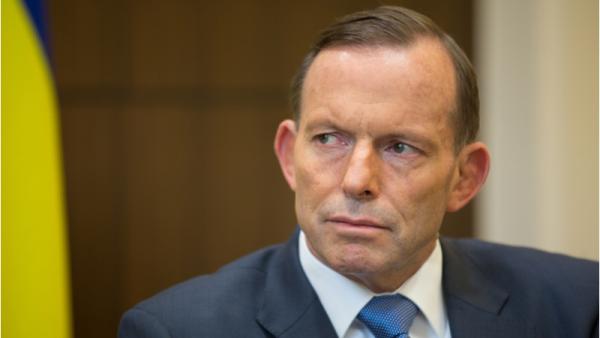
Bob Carr, Director, Australia-China Relations Institute, University of Technology Sydney |
This article appeared in The Australian on July 26 2015.
Barnaby Joyce’s success in getting live cattle into China is reminiscent of the China policy of our closest mate: New Zealand.
New Zealand’s policy on China a model for Australia? Don’t be ridiculous. The country has a smaller population than NSW. Its economy ranks 54; we are in the G20. It shelters in the southwest Pacific without any Australian security anxieties. Ridiculous to suggest its diplomacy warrants attention.
But a report commissioned by the Australia-China Relations Institute at University of Technology Sydney, and written by leading New Zealand-China hands suggests that a policy of robust pragmatism has worked well. It scored New Zealand a free trade agreement seven years before Australia’s, crowding Chinese supermarket shelves with NZ milk, cheese and wine.
Former NZ ambassador to Beijing Tony Browne says both sides of politics in New Zealand ran a China policy without reference to allies and the opinion of “like-mindeds”. It aired its differences with China at meetings with their leaders, not public reprimands.
A China policy pursued without reference to the US? Actually, not so different from present policy here. This was Tony Abbott’s response when he eased Australia into the Asian Infrastructure Investment Bank even after a request from Barack Obama that we not join. Moreover, Abbott was quick to rebuke a garrulous US assistant defence secretary who said B-1 bombers flying out of Australia was a done deal.
In other words, New Zealand’s pragmatism on China is little different from the China policy the Abbott government relaxed into after the mistakes (or the hard line, depending on your interpretation) of its first three months. In the learning phase it had called Japan an ally and our best friend in Asia and stormed out in front of other US allies in publicly condemning China for declaring an air defence identification zone over disputed islands in the East China Sea. Yet from early last year, the Abbott government stayed carefully neutral on the dispute between China and Vietnam over the positioning of an oil rig and rolled up its sleeves and drove FTA negotiations with the Chinese. When President Xi Jinping visited last November, Abbott declared, “I have never heard a Chinese leader commit so explicitly to a rule-based international order.”
The government hasn’t signed up to probe the Chinese-claimed spaces around artificial islands in the South China Sea, either with the Americans or on our own. Maybe Canberra has calculated, in unconscious imitation of the New Zealand approach, that we can deliver messages to Beijing about the South China Sea through diplomacy — diplomacy all the more persuasive because we haven’t signed up to patrolling these waters in this way but conceivably might if China is provocative.
When it comes to the New Zealand model of pure pragmatism in running relations with China, the fact is that Abbott and Key are now in the same space, running policies based on national interest, not ideology. With state-of-the-art FTAs, both countries are set to benefit from China’s reform program and a middle class that will increase by hundreds of millions by 2030, a class with a ravenous appetite for tourism, education and food. Two conservative leaders in the South Pacific running national interestbased China policies isn’t a bad look: veering away from a neocon agenda and putting the economic welfare of their people first.
I recall the response of Kurt Campbell, then Obama’s assistant secretary of state for East Asia and Pacific affairs, when I briefed him on Julia Gillard’s success in negotiating a “strategic partnership” (now overtaken by the Abbott government’s “comprehensive strategic partnership”) with Beijing. Campbell’s response was, “That’s all fine by Washington. Australia should be happy just being the most desired girl on the block.” That is, courted by China and the US.
This US sophistication is unsurprising. Australia is home to $758.2 billion in American investment. Our deserts hosts US intelligence facilities of incalculable importance. We were the biggest non-NATO presence in Afghanistan and have 900 personnel in Iraq. Washington will live with an Australian ally that manages a vigorous engagement with China and sometimes cautions the US that China’s rising power in the western Pacific is a fact of life. A presence to be steered into rules-based behaviour, yes. But a presence to be accommodated, inevitably.
One can have fun listing all the specifics that Australian hawks have laid down for their ideal China policy. It would be starkly different from the pragmatic line that the Abbott government has pursued since early last year.
We would revive a quadrilateral with the US, Japan and India in what would look like a China containment policy. We would be committing aircraft and vessels to patrol with the Americans, or patrol on our own, disputed areas in the South China Sea (reports in The Australian that assumedly reflect Defence Department thinking.) We would sign up to closer cooperation with Japan, moving by degrees towards a treaty with an ANZUS-style clause (longstanding Canberra rumours). We could be generally dismissive of the Chinese as in Michael Thawley’s comments that “China won’t help you produce a solution … it’s not willing or able to play a serious global leadership role.”
The sum total of this is an alternative policy from the one being run by Abbott and Foreign Minister Julie Bishop; its hue would be somewhat neocon, certainly Cold Warrior. It makes me think of advice
Alexander Downer gave me when I became foreign minister: “If you want a cold war with China, it’s easy to produce one.” Easy indeed.
Trouble is, it closes off options, prematurely — while China-Japan relations are thawing, while American’s ultimate actions, if any, in the South China Sea remain unknown, while China’s foreign policy as an emerging great power is still taking shape. More intelligent to cleave to what Abbott has done since last year: careful neutrality on maritime territorial disputes that maximises Australian potential to talk to and influence all sides, presumably expressing cautionary messages about abrupt Chinese behaviour in meetings with them.
You can always change if circumstances demand it.
You lose nothing by maintaining room for manoeuvre, and may even make Australian farmers happy.
Author
Bob Carr, former NSW premier and Australian foreign minister, is Director of the Australia-China Relations Institute at the University of Technology Sydney.


